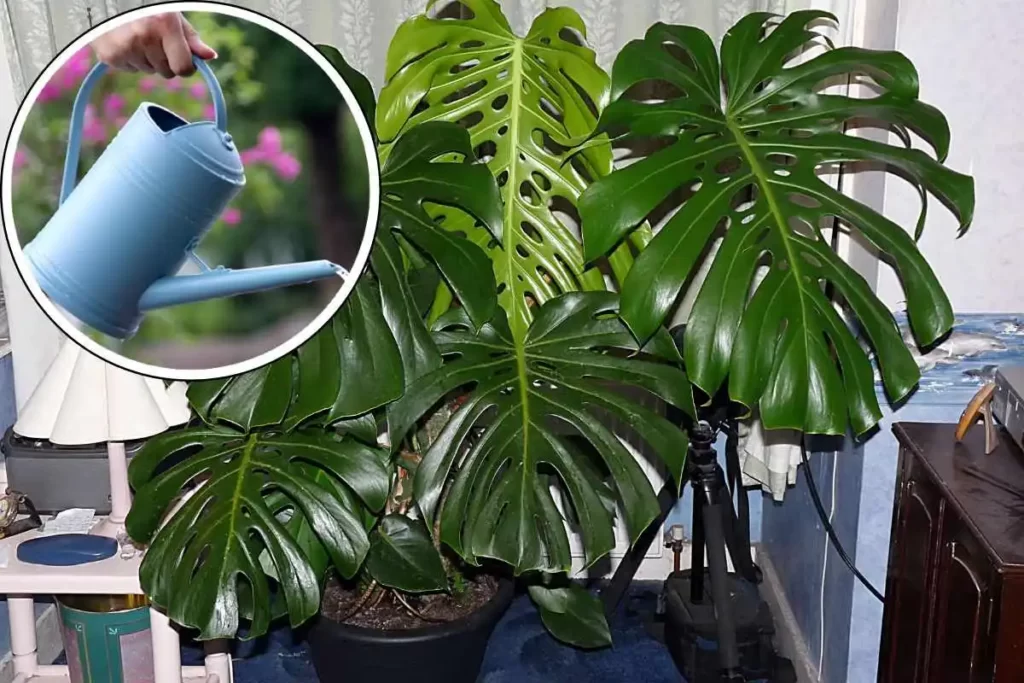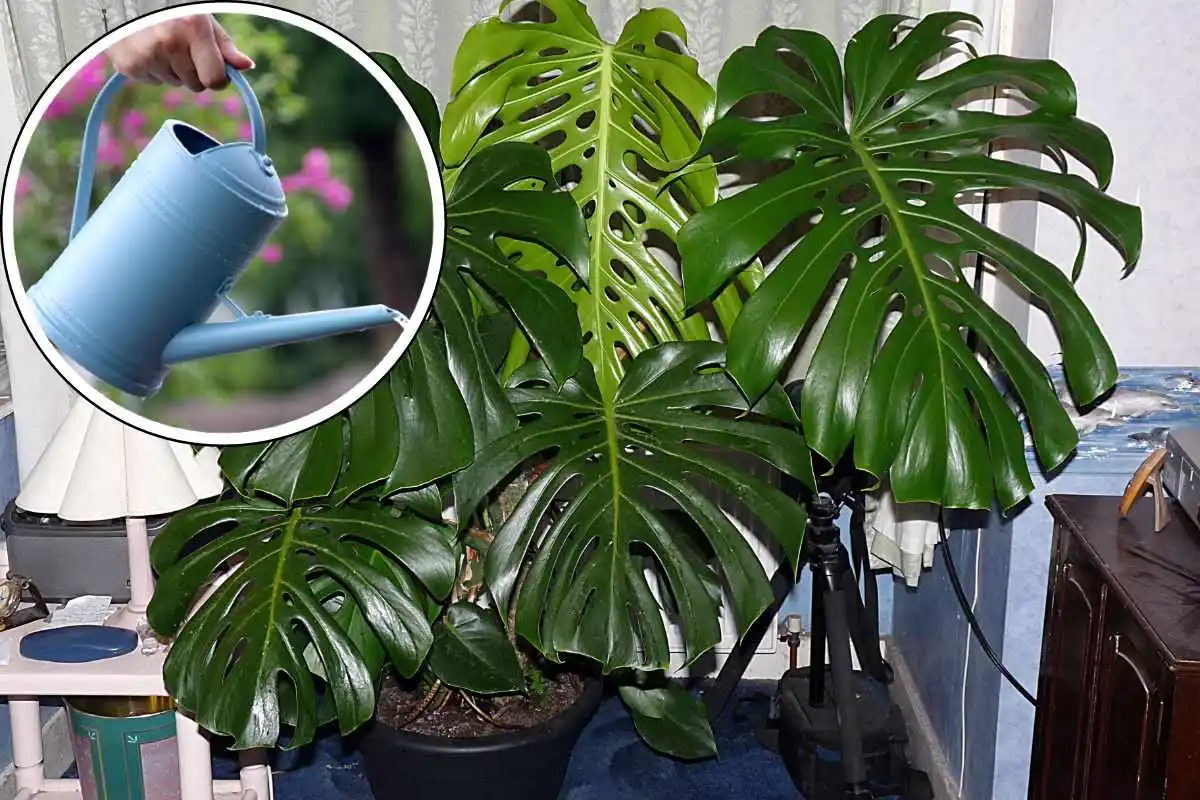Monstera deliciosa, with its stunning foliage and tropical charm, has become a favorite among plant enthusiasts.
However, as the colder months roll in, caring for these beautiful plants becomes a bit more complex, particularly when it comes to watering.
Winter poses unique challenges for plant care due to lower light levels and indoor heating, which can affect the watering needs of your Monstera.
To help you navigate this seasonal shift, here’s a comprehensive guide on Monstera watering in winter.

Understanding Monstera Watering Needs
Before diving into winter care, it’s crucial to understand the typical watering requirements of Monstera plants.
These tropical beauties thrive in moderately moist soil, but they’re susceptible to overwatering. Their roots can rot if left sitting in waterlogged soil for too long.
On the flip side, underwatering can lead to drooping leaves, browning, and overall stress for the plant.
Read: Monstera Plant Disadvantages And Benefits.
Factors Affecting Winter Watering
- Reduced Light: During winter, daylight hours decrease, and the intensity of sunlight diminishes. With lower light levels, Monstera plants experience slower growth and reduced water uptake. They won’t require as much water as they do during their active growth phases in spring and summer.
- Indoor Heating: Central heating indoors can create drier air, which, combined with lower light, affects the plant’s water requirements. Dry air leads to faster evaporation and moisture loss from the soil.
Monstera Watering in Winter
- Adjust Frequency: As a general rule, reduce the frequency of watering during winter. Instead of sticking to a rigid watering schedule, check the soil moisture before watering. Insert your finger about an inch into the soil—if it feels dry, it’s time to water.
- Watering Technique: When watering, ensure that excess water drains out properly. Avoid letting the plant sit in a saucer of water to prevent root rot. Consider using pots with drainage holes to facilitate proper drainage.
- Humidity Maintenance: Combat dry indoor air by increasing humidity around your Monstera. You can mist the leaves occasionally or use a humidifier to maintain a suitable humidity level, which helps prevent moisture loss from the plant.
- Room Temperature Water: During winter, it’s beneficial to use room temperature water rather than cold water, as extreme temperature variations can shock the plant.
- Observation is Key: Monitor your Monstera closely. If the leaves start drooping or developing brown tips, it could indicate either underwatering or overwatering. Adjust your watering routine accordingly.
Conclusion
Caring for your Monstera in winter requires a delicate balance between providing adequate moisture and preventing water-related issues.
By understanding the plant’s needs and adapting your watering practices to suit the seasonal changes, you can ensure your Monstera thrives even in the colder months.
Remember, each plant and environment is unique, so it’s crucial to observe and respond to your Monstera’s specific needs.
With proper care, your Monstera can continue to exhibit its lush, vibrant foliage, bringing a touch of the tropics into your home all year round.

